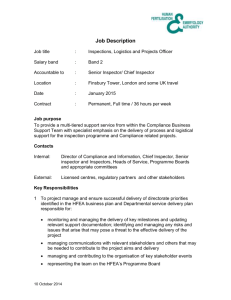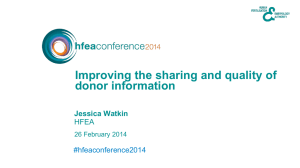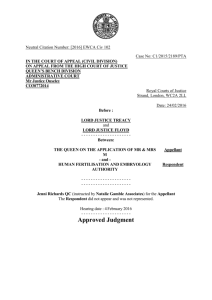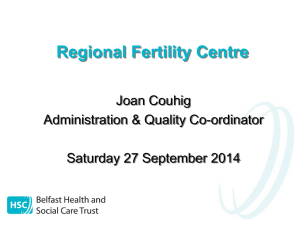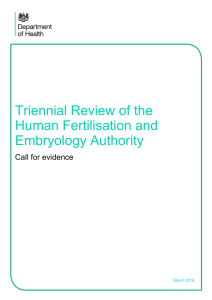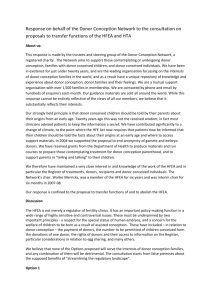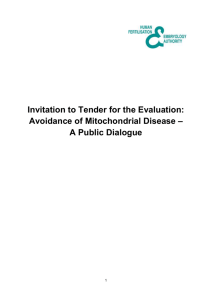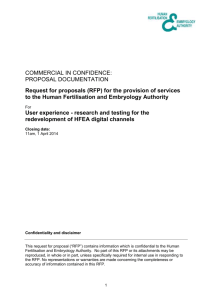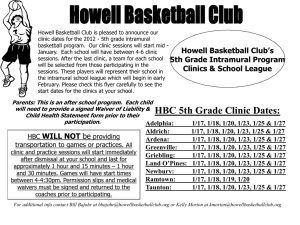Emer O`Toole, Information Manager, HFEA
advertisement
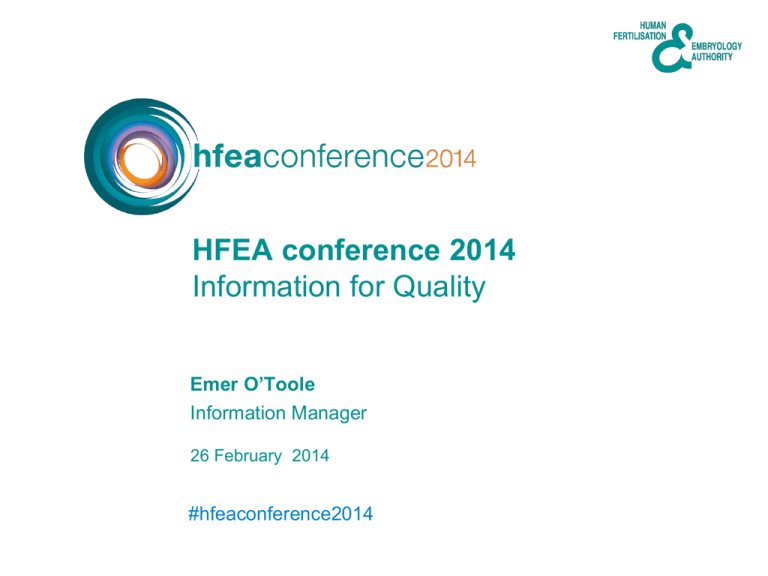
HFEA conference 2014 Information for Quality Emer O’Toole Information Manager 26 February 2014 #hfeaconference2014 Register overview HFEA required by law to keep a Register of Information which records details of regulated assisted reproductive services in the UK Recorded this information since HFE Act 1990 came into force:1 August 1991 Contains all births resulting from treatment services Licensed clinics are required by law to submit information to the HFEA relating to each cycle of treatment Everyone has a right to know if they were born as a result of licensed treatment Particular focus on information for donor and donorconceived people. Research tool Informed patient choice Register purposes Donor conception information Intelligent regulation Record of all treatment Opening the Register The HFEA received almost 300 OTR requests in the last financial year and the number of applications is increasing by approx. 25% each year Donor-conceived people themselves accounted for approx.17% of the requests Accurate responses to OTR requires the ability to track patients, embryos and donors across clinics as well as in individual clinics In order to do this the HFEA has introduced a unique reference which relies on a wide range of information from forms submitted to ensure all treatments using an individual donor is identified when a donor usage report is run This is also very important when linking donor-conceived people on Donor Sibling Link Choose a Fertility Clinic The HFEA have been providing clinic success rate information for prospective patient since the early 90’s It gives patients a valuable tool to search for clinics in their local area, see their opening times and general information about the clinic along with information on possible treatment success Choose a Fertility Clinic It also enables prospective patients to see their likely success rates based on their egg and some general treatment types such as ICSI and IVF, fresh and frozen cycles, own and donor eggs A lot of information from across the register is pulled together in order to present what patients have expressed a wish to see in a usable format It also allows clinics to measure their performance in relation to other clinics who may have a similar demographic Monthly an average there are 14500 individual hits on this section of the HFEA website Register as a research tool From October 2009: HFE Act 2008 allowed HFEA to release identifying information about patients’ treatment to researchers Allows for linkage to other datasets HFEA has oversight and disclosure process Law requires: - research to be in public interest & researchers must demonstrate why it cannot be carried out without access to identifying information - researchers bound by confidentiality restrictions - applications only from recognised research institutions - research ethics committee approval first HFEA also provides anonymous version of register for research Sector Reports The HFEA publish sector overview reports each year about the fertility sector with national information about success rates overall, children born using donor gametes etc. Data Dictionary project What’s included • Develop an agreed and defined data dictionary • Agreement on what data fields the HFEA collects, this may be impacted by some of the other projects • Definition of exactly what is included/excluded for each piece of data the HFEA collects • Agreed understanding of what each data field is used for e.g. OTR or part of CaFC calculations • Impact assessment on clinic data submissions types and HFEA internal systems • Sector liaison and agreement about the data set • Establish an expert group who can provide ongoing advice and guidance regarding the HFEA data dictionary as required. What’s excluded • Data submission systems, consent forms Data Dictionary project Expert Group • Due to the diverse needs of the HFEA’s various audiences the expert group should reflect these where possible. • There may be additional requirements on some group members more than others, for example the patient member may be involved in agreeing the dataset but may not be called on directly to help with data definitions in the same way as clinic staff Data from Forms to Fields Identifiers Patients, partners, intended parents, Donors Stimulation & Egg collection Result of Embryo transfer Embryo creation including gamete providers, use, storage, donation Baby/birth details Data Dictionary Project Group Exercise Your chance to directly input into the first Data Dictionary Experts Group meeting! Thank you. Contact: Emer.o’toole@hfea.gov.uk #hfeaconference2014
